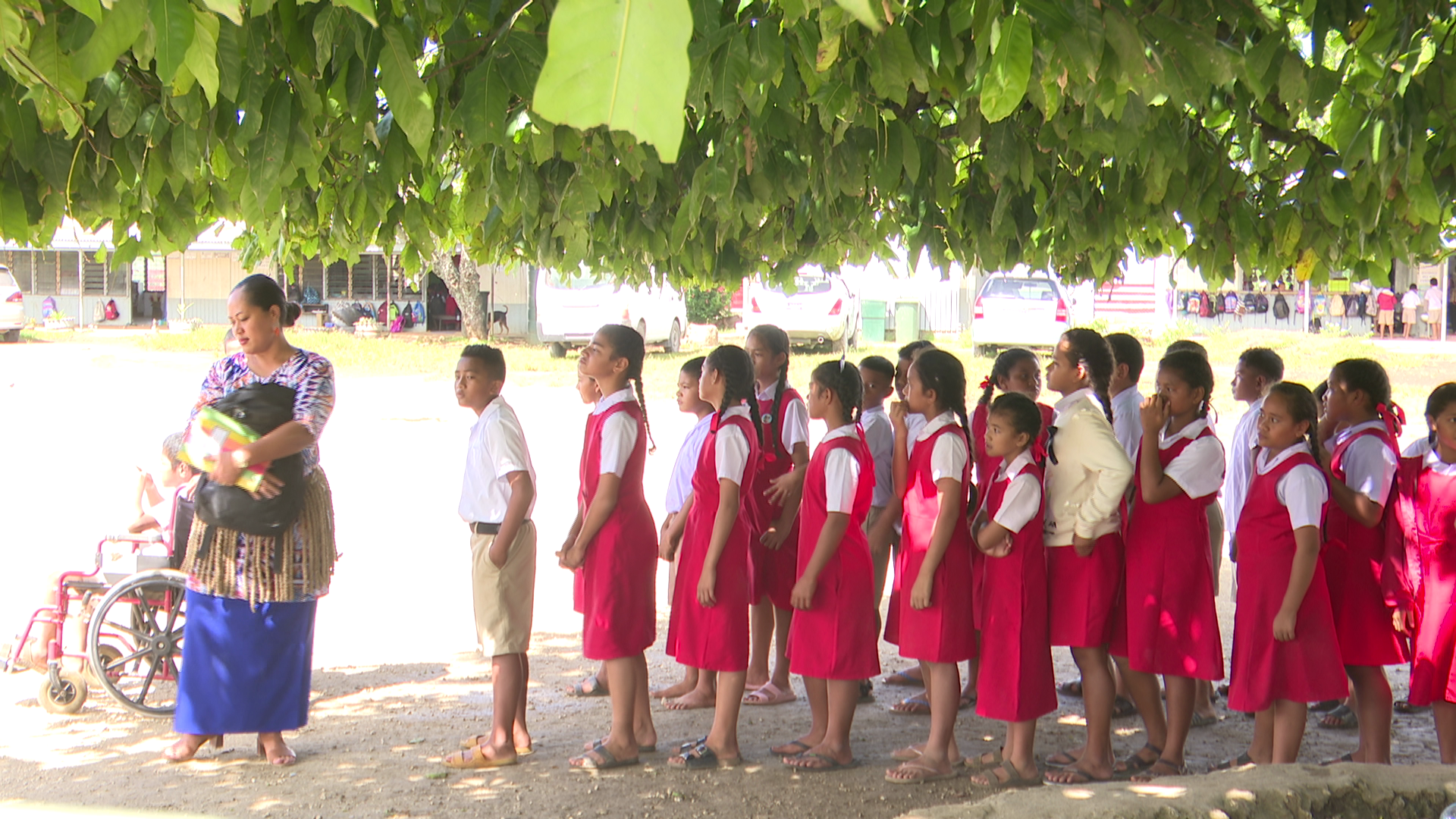Preparing for the worst to keep Tonga’s schools safe
Above: Students practice sheltering under their desks in an earthquake and tsunami preparedness drill in Tonga. Photo: Moala Elone/Save the Children
“Drop, take cover, and hold on,” calls the teacher, as students are warned of the imminent threat of an earthquake striking during school hours.
The earthquake makes it very difficult to stand up and lasts for longer than 40 seconds. This, combined with the fact that they are located in a tsunami risk area, means students are prompted to evacuate to a safe haven already identified in an evacuation map inside the classroom. Within minutes, they are safely evacuating with pre-prepared emergency supplies and first aid kits.
Above: Children assemble with their teacher to evacuate to a safe haven as part of the earthquake and tsunami drill. Photo: Moala Elone/Save the Children
Luckily, this is just a drill. But in disaster-prone Tonga, it’s critical that students learn how to prepare for and avoid the worst effects of volcanic eruptions, tsunamis, cyclones and other hazards.
Above: Claire, 11, said she wouldn’t forget the important lessons from the drills. Photo: Moala Elone/Save the Children
Supported through the Australian Humanitarian Partnership’s response to the 2022 volcanic eruption and tsunami, Save the Children recently worked with the Ministry of Education and Training to help students practice these drills, while simultaneously filming the exercise for other students to learn from.
For Claire, an 11-year-old girl from a small public school on Tongatapu island, it was an experience that she will not forget.
“We had to drop, cover our head and neck and hold on to our desks so that nothing will fall and injure us,” says Claire.
This was a very important lesson for the school children involved in the filming of these videos. Given the 2022 volcanic eruption and tsunami occurred in the evening, many of these young students have never had a disaster strike during school hours.
Malia, the teacher in charge of the class 6 students in the film, says “we still need to practice these drills more often to become automatic to both the children and teachers.”
“The videos produced will help us and other schools to be better prepared for such disasters,” says Kalesita, the Principal of a local middle school.
The teachers and the principals of most schools in Tonga come from different villages, so they have a different safe haven to run to for a tsunami warning. Therefore, it is very important that they know exactly what to do, and when and where to go, if an emergency strikes while they are at work and supervising students. It is critical that parents are involved as well, so they know when and where to pick up their child if an emergency takes place.
The video produced will be shown to students in early childhood education, primary, middle and secondary level schools across five island districts, to help them to prepare for an earthquake or tsunami warning during school hours.
The Australian Humanitarian Partnership response to the 2022 Hunga Tonga – Hunga Ha’apai volcanic eruption and tsunami is supporting longer term recovery, as well as disaster preparedness initiatives, including in schools. AHP partners are working closely with the Tongan government, communities and civil society to strengthen humanitarian response capacity and preparedness, while repairing damage to water, sanitation and hygiene facilities in tsunami-affected communities.




